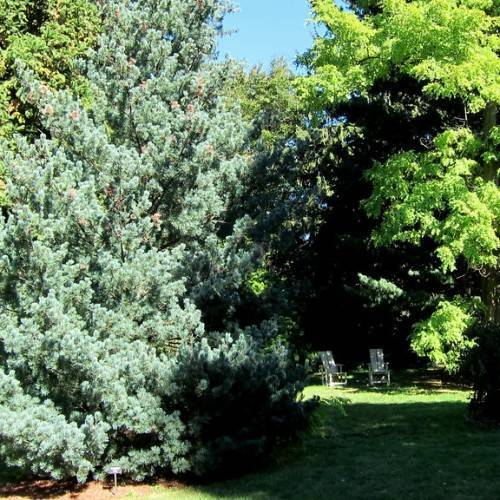
Hainan white pine
Pinus fenzeliana
Cycle:
Perennial
Watering:
Average
Hardiness Zone:
5 - 7
Flowers:
Flowers
Sun:
Full sun
Cones:
Yes
Leaf:
Yes
Growth Rate:
Low
Maintenance:
Low
Drought Tolerant:
Yes
Care Level:
Medium
watering
Hainan white pine needs thorough watering during their peak growing season, which is during the summer months. Gauge the soil to determine when the plant needs watered. The top of the soil should be dry before watering. During the summer, it will need to be watered deeply and regularly, at least once a week. During the winter months, the soil should remain moist but not saturated. Water the pine when the surface is dry, but not overly dry and cracked. If the top soil feels dry, add 1 inch of water and allow the soil to dry before watering again.
sunlight
The Hainan white pine (Pinus fenzeliana) is native to tropical and subtropical regions and loves bright, sunny conditions. The optimal amount of sunlight for this species of pine is full sun, meaning 6 to 8 hours of direct sunlight per day. Additionally, this species is tolerant of partial shade and can also tolerate some full sun in areas with very hot summers. However, for optimal health and growth, 6 to 8 hours of direct sun is generally recommended.
pruning
Hainan white pines should ideally be pruned in the early spring when the young new needles have fully emerged. Pruning should be done lightly and selectively, removing dead and crossing branches, and removing damaged branches. Pruning should be done so that it creates an attractive, well balanced and open structure. Focus should be on developing a strong, central leader with a well formed, conical shape. Pruning a mature cone-shaped tree should involve removing selected branches from the center that are rubbing together. Heavy pruning should be avoided to ensure the health and vigour of the tree.
